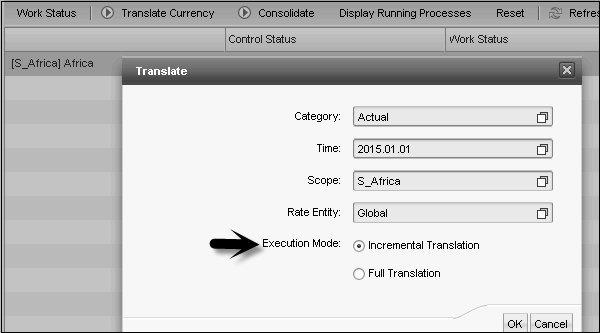
- SAP BPC - Home
- SAP BPC - Overview
- SAP BPC - Terminologies
- SAP BPC - Applications
- SAP BPC - Model Design
- SAP BPC - Data Loading
- SAP BPC - Reporting
- SAP BPC - Planning
- SAP BPC - Business Logic
- SAP BPC - Business Functions
- SAP BPC - Process Flow Management
- SAP BPC - Word Integration
- SAP BPC - PowerPoint Integration
- SAP BPC - Essential Tools
- SAP BPC - Business Process Flows
- SAP BPC - Custom Menu
- SAP BPC - Consolidation
- SAP BPC - Preparing Elimination
- SAP BPC - Configuring Elimination
- SAP BPC - Embedded Environment
- SAP BPC - Security
- SAP BPC - Hot Analysis
- SAP BPC - Park N Go
SAP BPC - Preparing Elimination
To perform currency conversion and intercompany eliminations, you need a dimension type - Intercompany dimension (I). To execute intercompany elimination, an application should have the following −
- Dimension Type I for intercompany elimination.
- Dimension I should include a property ENTITY.
- Account dimension should include the property ELIMACC.
- Entity dimension should include the property ELIM.
- You should set the appropriate business tables.
- There should be DPT package to execute intercompany logic.
| Dimension | Property | Length | Content |
|---|---|---|---|
| Account | ELIMACC | 20 | Valid account |
| Entity | ELIM | 1 char | It contains Y or blank |
| Intercompany | Entity | 20 | Entity Id w.r.t Intercompany member |
| Currency | Reporting | 1 | Y or blank |
Default elimination logic performs the following functions −
- Checks all base level entities where ELIM<>Y.
- Restricts currency dimension to all reporting currencies only.
- It removes all accounts to be eliminated into desired plug account.
- Elimination is performed below first common parent in elimination entity.
Consolidation Central
SAP BPC Consolidation central is used to manage and prepare consolidated data and provides a correct view of consolidated data in an organization. Consolidation module also provides an environment to perform consolidation tasks over the web.
Following are the key features in Consolidation Central −
Consolidation Monitor
In SAP Business Planning and Consolidation NetWeaver version, you have consolidation monitor that is used to manage consolidated data reported by groups and entity members. Consolidation monitor also controls the reported data.
It is one of the key components while executing incremental consolidation as it communicates with consolidation engine to perform currency translation execution. Consolidation monitor also displays the group-entity hierarchy that is defined in Ownership manager. Using the consolidation monitor, you can execute full consolidation that contains group-entity hierarchy. You can also perform incremental consolidation with only updated entities.
Journals
Consolidation central contain journals which are used to create and manage journal entries for updated consolidated data in database.
Ownership Manager
It contains Ownership Manager to manage ownership-based hierarchies.
Controls Monitor
It is used to manage controls which is used to validate reported data.
Setting Up Journals
Journals in BPC are used to update data in the database. This is normally done to post quarter end or year-end data in BPC.
Example − Suppose the administrator has uploaded general ledger information into an application for Area Manager to review using data manager. The Area Manager can make necessary changes to the data using journal entry.
Following are the tasks that can be performed by Journal manager. If you have any open journal entry, you can perform these from Journal options.
| Task | Navigation |
|---|---|
| Creating a Journal Entry | This can be done from the Action Pane. |
| Modifying a Journal Entry | Save as option can be used to save journal entry with new ID. |
| Copying Journal Entry | From Journal list, select a Journal Entry and copy to confirm. |
| Searching for a Journal | Select New Query from Journal Manager. |
| Reopening a Journal | Select Reopen Journals. |
There are other Journal entry functions that can be performed using the Journal Manager or from the Action Pane.
To create, edit, delete and modify Journal Parameters, go to Business Planning and Consolidation Administration → Features.
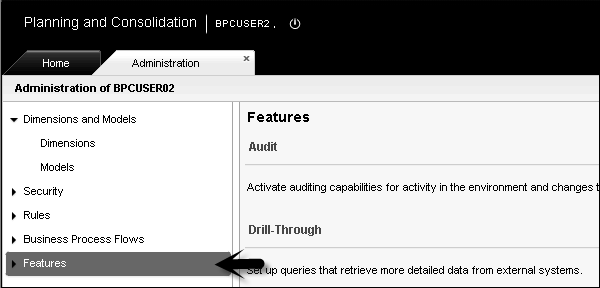
Expand the Feature tab → Select Journals.
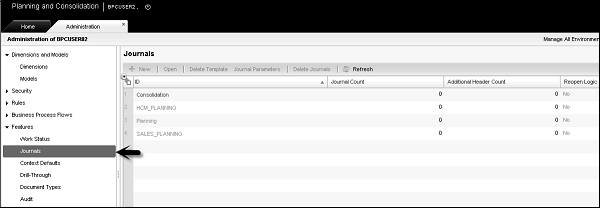
Using this, you can create new journals, delete template, journal parameters, delete journals, etc.
Translating Local Currency
Translating local currency means converting the amount in source currency to a target currency. You can perform currency translation at any group/entity level.
Translating local currency is performed in consolidation central of Business Planning and Consolidation system. To run the currency translation on a specific entity, your BPC administrator should grant you write access on that entity.
Following are the main facts in performing local currency translation −
Category − This includes categorization of reported data to which you linked the translated amount.
Time − It displays the data entry period in which the amount to be translated was entered.
Reporting Currency − This tells you to select the currency in which you want to run the translation.
Group/Entity − This defines the fields on which translation is performed.
Translation Execution Mode − You can perform a full translation of local currency or you can select an incremental translation.
Rate Entry − This contains the exchange rates to select while performing currency translation.
Performing Currency Translation
Go to BPC web portal → Select Consolidation Central.

Go to Consolidation Monitor after expanding Consolidation Central.
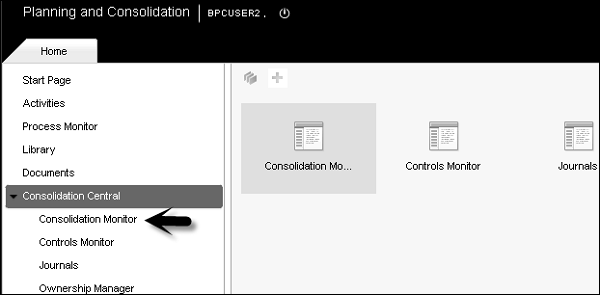
Select the entity/group row for which you want to perform currency translation.
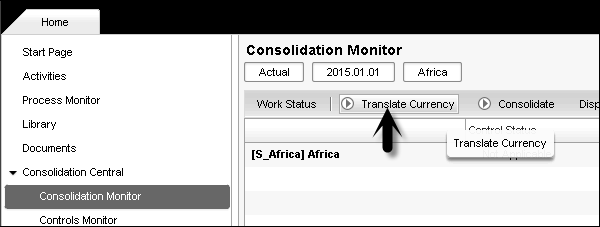
In the next dialog box, select the Execution mode - full translation or Incremental Translation. Click Ok after selecting the fields.
